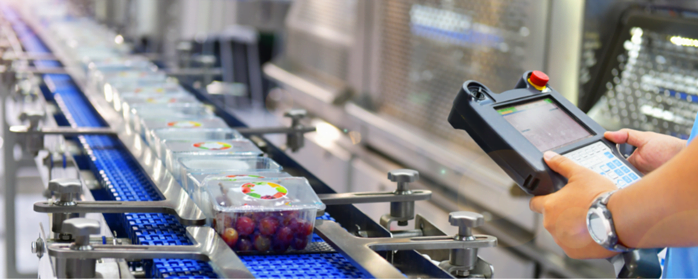Does your business rely on the performance of your weighing equipment to deliver high-quality products or services at optimal efficiency? The breakdown of weighing equipment can impact on your operations, which can result in lost revenue. There are some simple steps that you can incorporate into your weighing processes to ensure you get the most out of your weighing equipment and potentially save your business time and money.
Best practices for optimal weighing efficiency
1. Buy the right equipment for the job
To safeguard against downtime, first, you need to establish what you are going to use the equipment for, where you are going to use it and how often. For instance, if you are working in a hazardous or ATEX environment where there is a risk of vapours or dust igniting or exploding, you will require specialist ATEX certified equipment for hazardous materials weighing.
Once you have clarity, it is important to choose a weighing solutions partner that has the expertise to match the best-fit equipment to your application and environment. When vetting suppliers, be sure to ask whether engineers can install, provide the required traceable or UKAS calibrations and user training. This will ensure your equipment is ready to use, compliant and that you are well equipped to prevent misuse and breakdowns.
2. Be aware of the IP rating of your weighing instruments
Ingression protection, also known as IP rating, refers to а standard set by the International Electrotechnical Commission to indicate the level of dust and water protection a device has. You must buy the right equipment for your environment. The higher the rating, the more dust and moisture your equipment can withstand without breaking down. Weighing equipment which is designed to be used in food factories, where equipment can get wet, need a much higher index of protection.
3. Buy enough equipment for your business needs
It’s often a false economy to limit investment to one machine for use in multiple departments. Transporting it by hand from one location to another can often cause problems. Errors and downtime can occur when equipment is used without first being warmed in its alternate location. Your equipment can also lose its calibration setting or may be damaged during transportation, which could lead to repairs or further capital investment.
4. Locate your weighing equipment correctly
It’s important to keep your weighing equipment on a firm, horizontal and stable surface. The accuracy of high-resolution balances can be affected by unstable surfaces, vibrations, or draft. A spirit level should be used in conjunction with adjustable feet (when fitted) to ensure a true level is obtained. This is particularly important for balances with a readability of 0.1g or less.
Your working environment can have an impact on the accuracy of your results. Therefore, consideration should be made to vibrations and draughts caused by passing foot traffic or the opening of doors for example. These issues can be mitigated with the use of anti-vibration tables and with draught shields.
5. Protect your instruments with an in-use cover
In-use covers are used to protect the non-moving parts of a balance or a scale. They’re ideal for messy applications and help to prevent keypads and other parts from being damaged from dust and accidental spills. Therefore, allowing for easier cleaning of the equipment after the process is completed. If in-use covers crack, break or misshape, they can lead to inaccurate weighing results. So, make sure you promptly replace these to ensure longevity and continued accuracy of your instrument.
6. Ensure the equipment is always operated correctly
Take time to understand how to correctly operate your equipment and their functional constraints. A sudden shock can cause overloads and equipment breakdown. So, it’s important to ensure the machine’s maximum capacity is never exceeded. When using test weights, be sure to use the correct class and composition of reference weights for your application and environment. It is also important to use specifically designed weighing pans to avoid errors with static charge or spillages.
7. Keep your weighing equipment clean and report any problems
Dirt and contamination can cause serious problems with your weighing equipment leading to avoidable faults and repairs. Any debris should be carefully cleaned away from the internal parts, and you should always inspect your equipment for any noticeable damage or rust before an operation. Make sure you report any damage as soon as it occurs, as the smallest defects can cause quality issues and financial losses.
Be sure to conduct routine checks on your weighing equipment. Checks should be performed in line with your standard operating procedures to help you keep track of any calibration drift and stay ahead of any malfunctions.
8. Calibrate regularly
To avoid downtime caused by inaccurate results, work with a weighing partner to calibrate your equipment at suitable frequencies. Equipment in heavy use or those operating in non-clean environments may need to be checked, calibrated and serviced more regularly.
A calibration engineer will check the accuracy of your equipment using their reference weights, make any necessary adjustments if required, and issue a certificate to report on its accuracy. If the calibration is not within your tolerances, you should assess the reasons for this with your engineer and consider increasing the frequency of visits. You should also continue to monitor accuracy and check for issues between the calibration visits using in-house test weights.
Implement a Preventative Maintenance Plan
Waiting until your weighing equipment is out of action can lead to unexpected downtime, expensive repairs, unforeseen costs, and potentially dissatisfied customers.
If your weighing processes are critical to your operations, ensure you have access to an impartial weighing partner who can implement a preventative maintenance plan that provides inclusive calibrations, breakdown support and courtesy hire equipment. This will give you peace of mind that weighing support is readily available for routine maintenance, unexpected malfunctions and help to reduce any quality issues or financial impact on your operations.





